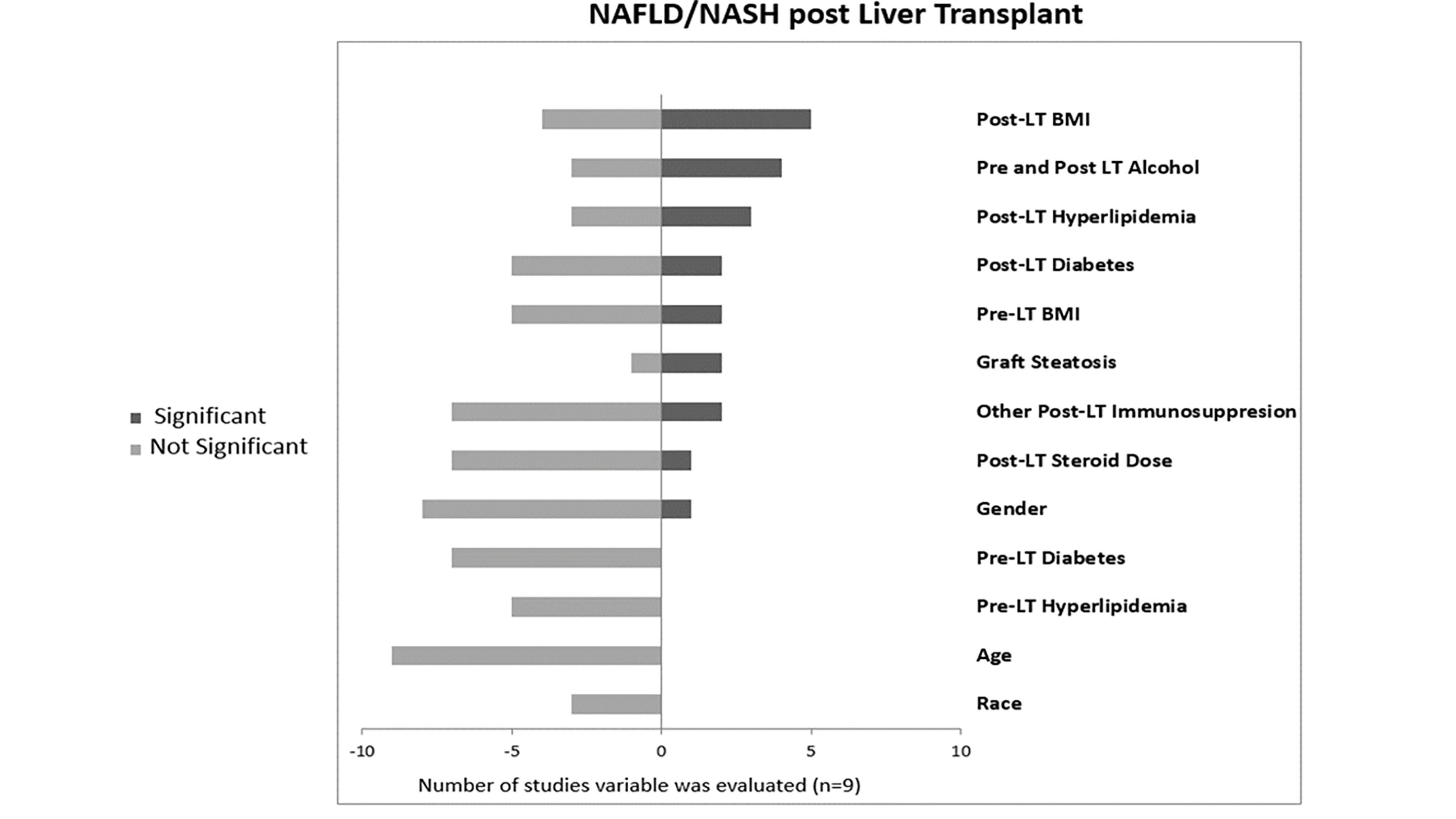Incidence and Risks for Non-alcoholic Fatty Liver Disease and Steatohepatitis Post Liver Transplant: Systematic Reveiw and Meta-Analysis
N. Saeed1, P. Sharma2, L. Glass2, C. Shannon2, C. Sonnenday2, M. Konerman2
1Beaumont Hospital, Ann Arbor, MI, 2University of Michigan, Ann Arbor, MI
Meeting: 2019 American Transplant Congress
Abstract number: B318
Keywords: Liver grafts, Metabolic complications
Session Information
Session Name: Poster Session B: Liver Retransplantation and Other Complications
Session Type: Poster Session
Date: Sunday, June 2, 2019
Session Time: 6:00pm-7:00pm
 Presentation Time: 6:00pm-7:00pm
Presentation Time: 6:00pm-7:00pm
Location: Hall C & D
*Purpose: Recurrent and denovo non-alcoholic fatty liver (NAFLD) and non-alcoholic steatohepatitis (NASH) are important post-liver transplant (LT) outcomes given risk to graft viability. The true incidence and unique post-LT risk factors for recurrent and denovo post-LT NAFLD/NASH remains poorly characterized. We aimed to identify the incidence and risk factors for recurrent and denovo NAFLD/NASH post-LT. Incidence and predictors of fibrosis stage was also assessed.
*Methods: MEDLINE via PubMed, Embase, Scopus and CINAHL were searched for studies from 2000- 2018. Two authors independently reviewed articles to select eligible studies and perform data abstraction. Meta-analysis of risk factors for post-LT NAFLD/NASH was performed as was assessment for publication bias.
*Results: Seventeen studies representing 2378 patients from unique cohorts were included. All studies were retrospective analyses of patients with post-LT liver biopsies, with the exception of two studies that used imaging for outcome assessment. In total, 7 studies evaluated recurrent NAFLD; 3 denovo NAFLD; and 7 included both recurrent and denovo NAFLD. Average 1, 3 and ≥5-year incidence rates were: 59%, 57 %, and 82% for recurrent NAFLD; 67%, 40%, and 78% for denovo NAFLD; Average 1, 3 and ≥5-year incidence rates were: 53%, 57.4%, and 38% for recurrent NASH; 13%, 16%, and 17% for denovo NASH. Multivariate analysis demonstrated that post-LT BMI and hyperlipidemia, were the most consistent predictors of post-LT NAFLD (significant in 5/9 and 3/6 studies respectively) (Figure 1). Subsequent meta-analyses of these risk factors only noted a significant impact for post-LT BMI with a pooled OR of 1.27 (1.19-1.35, p<0.001, I2 80.6%). Significant publcation bias was present. Individuals with recurrent disease, younger age and NASH had more advanced fibrosis.
*Conclusions: Both recurrent and denovo NAFLD are highly prevalent post-LT, occurring in over half of recipients as soon as 1-year post LT. NASH similarly recurs in the majority of patients post-LT, but denovo NASH occurs in only roughly 1/6 of recipients. Independent predictors of post-LT NAFLD/NASH appear to be indistinct from those in the pre-LT setting. Fibrosis was noted in a fair proportion of patients, thus highlighting the critical importance of aggressive risk factor modification in the post-LT setting to prevent new or recurrent disease.
To cite this abstract in AMA style:
Saeed N, Sharma P, Glass L, Shannon C, Sonnenday C, Konerman M. Incidence and Risks for Non-alcoholic Fatty Liver Disease and Steatohepatitis Post Liver Transplant: Systematic Reveiw and Meta-Analysis [abstract]. Am J Transplant. 2019; 19 (suppl 3). https://atcmeetingabstracts.com/abstract/incidence-and-risks-for-non-alcoholic-fatty-liver-disease-and-steatohepatitis-post-liver-transplant-systematic-reveiw-and-meta-analysis/. Accessed December 19, 2025.« Back to 2019 American Transplant Congress

